Considering that burls have probably been around as long
as trees themselves and that they have been prized by woodworkers for centuries,
there is a surprising lack of consensus on the identification and nature of
burls. The following general description of a burl does appear to be widely
accepted: A burl is an area of abnormal and irregular growth protruding from a
tree.
"Normal" Wood
Normal wood grain runs in one direction,
lengthwise along the trunk and branches of a tree. This gives wood certain
characteristics that are so well known they have entered the language as
metaphors. We all know that something which "goes against the grain" is
disruptive or disturbing. This comes from the fact that wood is best cut "with
the grain," so the tool meets a minimum of resistance and leaves a cleanly cut
surface. If you cut against the grain, the grain will tear and the wood will be
hard to work.
Any woodworker knows what this means. A
cabinet maker will think of the hiss of the clean shaving as it comes off a
plane that is following the grain of the wood. A turner will think of the
ribbons of shavings that fly from a gouge that is cutting into the wood at the
correct angle to the grain. A carver will know that the gouge will only achieve
a clean cut if it is cutting in certain directions.
Burl Grain
So how is a burl different? Burl growth is
chaotic with no discernable grain direction and it is these irregular patterns
of grain that can make burl wood so attractive.
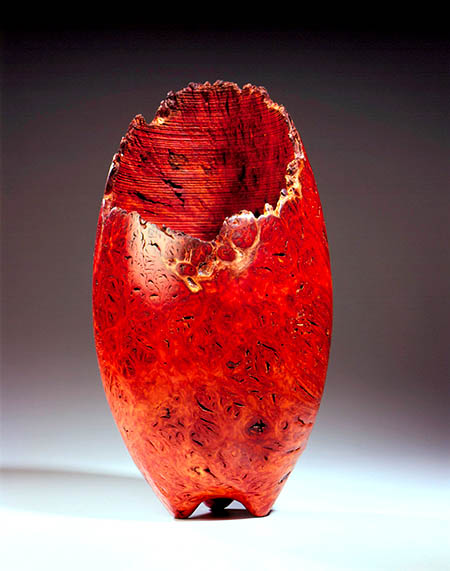
Jarrah Burl Vessel by Terry Martin
The absence of grain means that
burl wood can be cut equally well in almost any direction. This makes it
particularly suitable for peeling as veneer. The highly expensive paneling on
the dashboards of classic cars is often burl veneer. Burl veneer has also been
used as inlay for marquetry and other fine furnishing techniques for
generations.
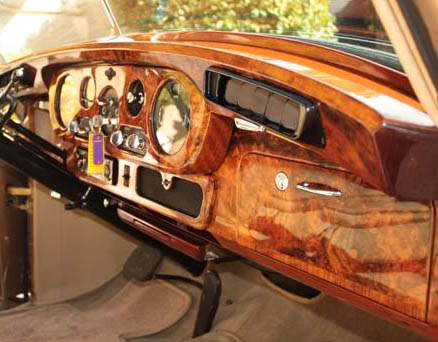
Burl dashboard, 1931 Rolls Royce Phantom II
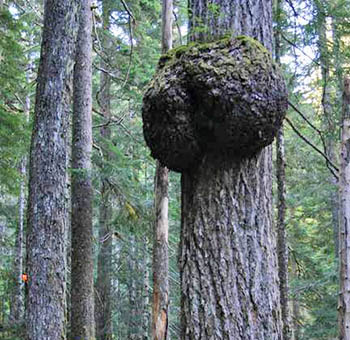
Burls can occur on most species
of trees. Sometimes burls grow among the roots, sometimes at ground level and
sometimes hundreds of feet up in the air. Burls more often grow on the trunk
than on branches. They vary in size from a hand span wide up to several yards
across, weighing many tons.
Sometimes a tree is so covered
in burl that there is hardly any part of the tree that is left unaffected. These
trees are rare and are usually referred to as "burl trees." The Blakely Burl
Tree is one such tree.
The Mystery of Burl Formation
Why do burls occur? Firstly, it
needs to be pointed out that those who are talking about burls are sometimes
talking about something else entirely. The overgrowth that develops to heal a
physical trauma to a tree is one example. Close examination of such a growth
will usually reveal conventional growth rings, something which is usually absent
with burls.
Others confuse figured wood,
sometimes called fiddleback or bird's-eye, with burl wood. Figured grain is
usually found in stress points where the tree flexes in the wind, such as at
ground level or where branches fork. It is probably a form of interlocking grain
that strengthens the tree.
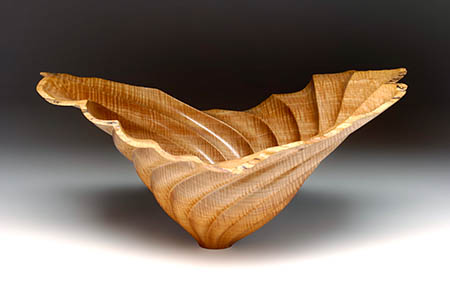
Vortex, Fiddleback Maple, by Gary Stevens
Scientists suggest different
causes for the development of burls. These include insect infestation, physical
trauma, and pollution. Those who work with burls and particularly those who
harvest the burls themselves tend to the idea that burls result from a genetic
predisposition, perhaps with an environmental trigger. This is supported by the
fact that where you find one tree growing burls, you often will find others
within the seed cast territory of that tree. This has been the experience of the
team who harvested the Blakely Burl Tree.
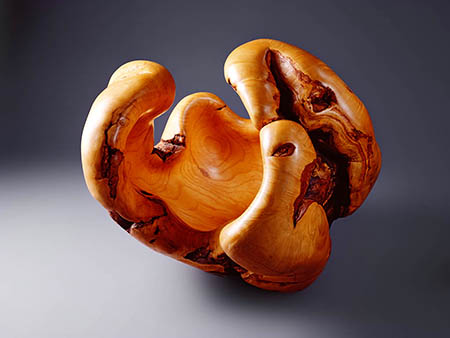
Ash Burl Sculpture, by Mark Lindquist
Pecan Burl
The pecan tree belongs to the
hickory family. Its wood has been used in many applications for generations,
particularly where strength is required. Although burls are frequently found on
many types of trees, there are others that rarely produce burls. The pecan is
one such tree.
Not one of the Blakely Burl Tree
team, including tree surgeons and wood harvesters, nor any of the residents of
South Georgia involved in the project, could ever recall seeing a pecan tree
with a burl on it, let alone a pecan burl tree. There may be more out there, but
so far none have been found by the team.
For more information, read an article on burl written by Mark Lindquist,
from his book: Sculpting Wood >>>